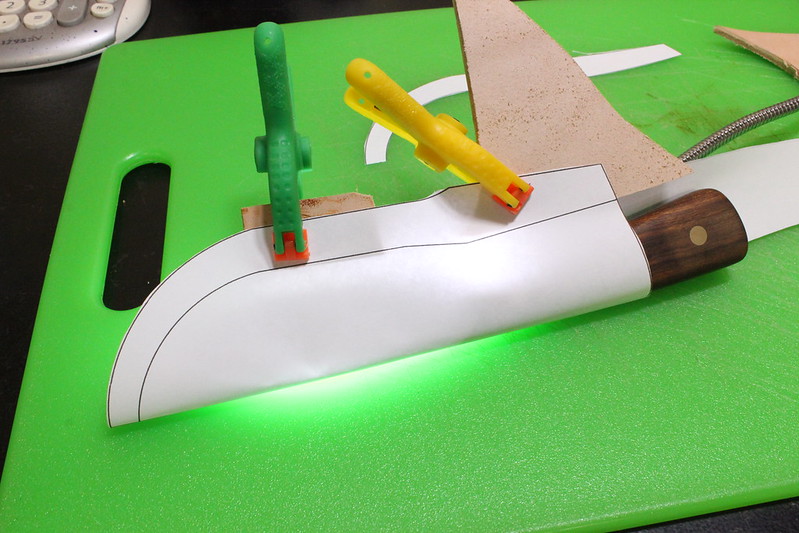- Joined
- Nov 15, 2005
- Messages
- 1,205
So I'm planning on crafting a leather sheath for this knife!
Knife distentions (PDF) here: https://www.dropbox.com/s/xxf2gyypusejfeo/JKeeton - Skinner.pdf?dl=0
I was wondering if you pouch sheath makers have some rules of thumb for things like:
JKeeton
PS: If the answer is: Try it out then adjust the next one... that's fine; I'm just looking for the best possible starting point to reduce iterations!
This is the design I currently have speced out.
Whole Layout:

Handle Section:

Belt Loop Section

EDIT:
I meant to have this picture as well:

Knife distentions (PDF) here: https://www.dropbox.com/s/xxf2gyypusejfeo/JKeeton - Skinner.pdf?dl=0
I was wondering if you pouch sheath makers have some rules of thumb for things like:
- Distance between template edge and welt
- Welt retention section spacing from template
- Distance between template spine and center line
- Based off leather thickness for the fold?
- Pocket size for the handle
JKeeton
PS: If the answer is: Try it out then adjust the next one... that's fine; I'm just looking for the best possible starting point to reduce iterations!
This is the design I currently have speced out.
Whole Layout:

Handle Section:

Belt Loop Section

EDIT:
I meant to have this picture as well:

Last edited:















 ... I must of set it down on something dirty. I've tried to clean it off with Bick 5 without success...
... I must of set it down on something dirty. I've tried to clean it off with Bick 5 without success... 
 . You draw with pencils and I draw with CAD; same thing.
. You draw with pencils and I draw with CAD; same thing.